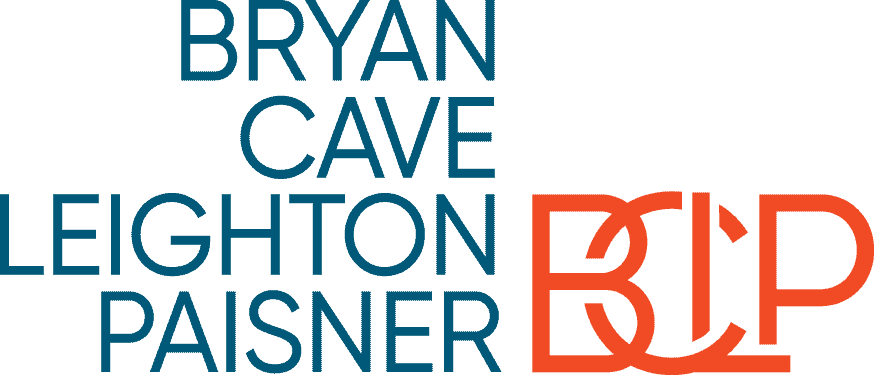
How the New FDIC Assessment Proposal Will Impact Your Bank
Brought to you by Bryan Cave Leighton Paisner

 In June, the Federal Deposit Insurance Corp. (FDIC) issued a rulemaking that proposes to revise how it calculates deposit insurance assessments for banks with $10 billion in assets or less. Scheduled to become effective upon the FDIC’s reserve ratio for the deposit insurance fund (DIF) reaching a targeted level of 1.15 percent, these proposed rules provide an interesting perspective on the underwriting practices and risk forecasting of the FDIC.
In June, the Federal Deposit Insurance Corp. (FDIC) issued a rulemaking that proposes to revise how it calculates deposit insurance assessments for banks with $10 billion in assets or less. Scheduled to become effective upon the FDIC’s reserve ratio for the deposit insurance fund (DIF) reaching a targeted level of 1.15 percent, these proposed rules provide an interesting perspective on the underwriting practices and risk forecasting of the FDIC.
The new rules broadly reflect the lessons of the recent community bank crisis and, in response, attempt to more finely tune deposit insurance assessments to reflect a bank’s risk of future failure. Unlike the current assessment rules, which reflect only the bank’s CAMELS ratings and certain simple financial ratios, the proposed assessment rates reflect the bank’s net income, non-performing loan ratios, OREO ratios, core deposit ratios, one-year asset growth, and a loan mix index. The new assessment rates are subject to caps for CAMELS 1- and 2-rated institutions and subject to floors for those institutions that are not in solid regulatory standing.
While the proposed assessment rates reflect a number of measures of an institution’s health, provisions relating to annual asset growth and loan mix may influence a bank’s focus on certain categories of loans and the growth strategies employed by many community banks in the future. We’ll discuss each of these new assessment categories in turn.
One Year Asset Growth
Under the proposed assessment rules, year-over-year asset growth is subject to a multiplier that would have, all other things being equal, the effect of creating a marginal assessment rate on a bank’s growth. In the supporting materials for the FDIC’s rulemaking, the FDIC indicates that it found a direct correlation between rapid asset growth and bank failures over the last several years. But while organic asset growth is subject to the new assessment rate, asset growth resulting from merger activity or failed bank acquisitions is expressly excluded from the proposed assessment rate. This approach is somewhat counterintuitive in that most bankers would view merger activity as entailing more risk than organic growth or growing through the hiring of new teams of bankers. While the new assessment rate might not be significant enough to impact community bank growth strategies on a wide scale, it may offset some of the added expense of a growth strategy based upon merger and acquisition activity.
Loan Mix Index Component
This component of the assessment model requires a bank to calculate each of its loan categories as a percentage of assets and then to multiply each category by a historical charge-off rate provided by the FDIC. The higher the 15-year historical charge-off rate, as weighted according to the number of banks that failed in each year, the higher the assessment under the proposed rules. Unsurprisingly, the proposed rules assign the highest historical charge-off rate (4.50 percent) to construction and development loans, with the next highest category being commercial and industrial loans at 1.60 percent. Interestingly, the types of loans with the lowest historical charge rates are farm-related, with agricultural land and agriculture business loans each having a 0.24 percent charge-off rate.
While the new loan mix index component is a clear reflection of the impact of recent bank failures on the current assessment rates, it may also create economic obstacles to construction lending, which continues to be performed safely by many community banks nationwide. Despite these positive stories, there is no doubt as to the regulators’ views of construction lending—in conjunction with the new Basel III risk-weights also applicable to certain construction loans, community banks face some downside in continuing to focus on this category of loan.
However, when considering the asset growth and loan index components together, community banks that have a strong pipeline of construction loans may have added incentive to complete an acquisition, particularly of an institution in a rural market. Not only can the acquiring bank continue to grow its assets while incurring a lower assessment rate, it can also favorably adjust its loan mix, particularly if the seller has a concentration of agricultural loans in its portfolio. In general, acquirers have recently focused their acquisition efforts on metro areas with greater growth prospects, but the assessment rules may provide an incentive to alter that focus in the future. In many ways, the proposed assessment rates provide bankers an interesting look “behind the curtain” of the FDIC, as this proposal clearly reflects the FDIC’s current points of regulatory concern and emphasis. And while none of the components of the proposed deposit insurance assessments may have an immediate impact on community banks, some institutions may be able to reap a substantial benefit if they can effectively reflect the new assessment components in their business plan going forward.


